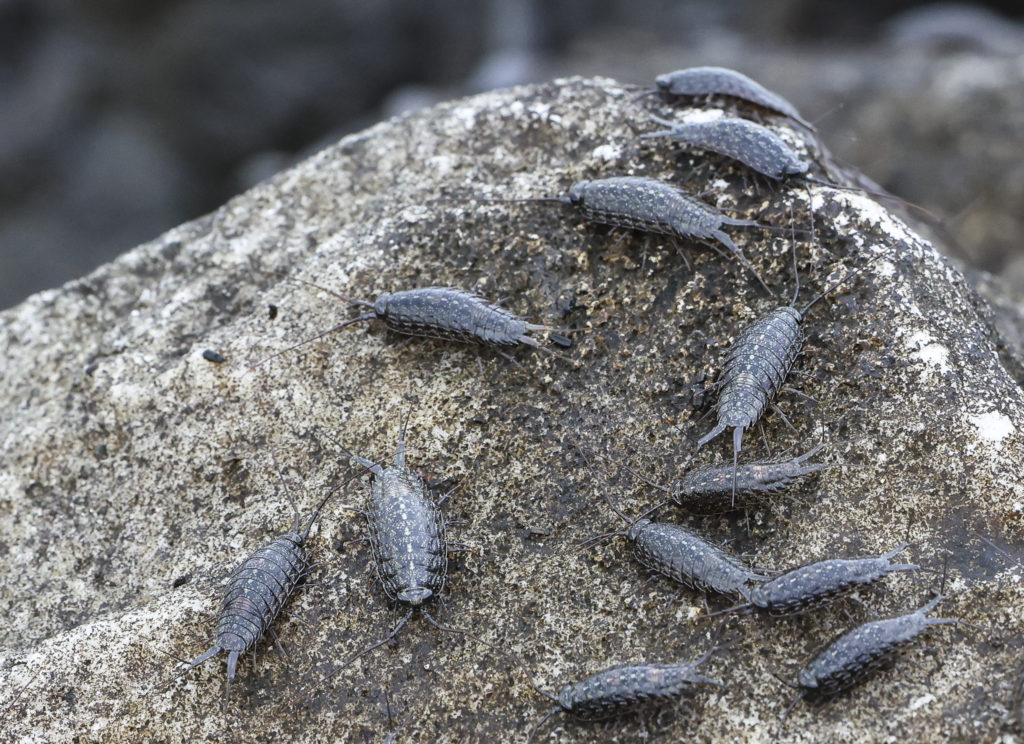The Ancient Isopods

By Wayne Bierbaum
When walking along the shoreline, I frequently see small dark creatures scurrying along around the edge of rocks. They are pretty fast and easily escape under the rocks, their multiple legs seem to roll them along. These dark creatures are from an ancient order of crustaceans called isopods (from the Greek words for “equal feet”). Their common name is rock lice and they date back 300 million years ago to the shallow seas of the Carboniferous Period. Earlier forms of isopods still exist in Tasmania.
I know of three common local isopods. The first is the rock lice which feeds on the algae and detritus along the edge of a marine shoreline. Rock lice are actually terrestrial animals but cannot tolerate becoming dried out. They grab onto rocks as waves wash over and can swim but will drown if submersed for too long.
The second type found locally are pill bugs or roly polies. I see them frequently as I pull up weeds along a fence line. They rush away to find a dark hiding spot. If I try to pick one up it will roll into a ball. They are nocturnal and usually eat decaying plants. They are considered a beneficial terrestrial crustacean.
The last of the three common isopods is one that anglers talk about. When striped bass have freshly entered into the Chesapeake Bay from the ocean, they carry parasitic isopods called sea lice on their gills. After the striped bass have been in the lower salinity of the Bay for more than a couple of weeks, the gill lice slowly drop off. When a striper is caught and pulled out of the water, the isopods will fall off the fish’s gills and onto the boat deck. The presence of sea lice indicates how recently the bass left the ocean.
Isopods have a hard-shelled exoskeleton that is a series of seven jointed plates with seven pairs of jointed legs. There have two antennae and two weak eyes. The female isopods have a unique structure for taking care of their young. They have a pouch where the young are hatched and taken care of until molting.
Isopods include 10,000 species that range from the small roly poly to giant 20-inch benthic isopods that help clean up the ocean floor. Isopod lifespans are uncertain—roly polies have been measured to live up to seven years old but some of the deep water species may live to over 100.
These interesting and ancient creatures are not really “bugs” but are an order of crustaceans, making them closer to crabs than ladybugs.
